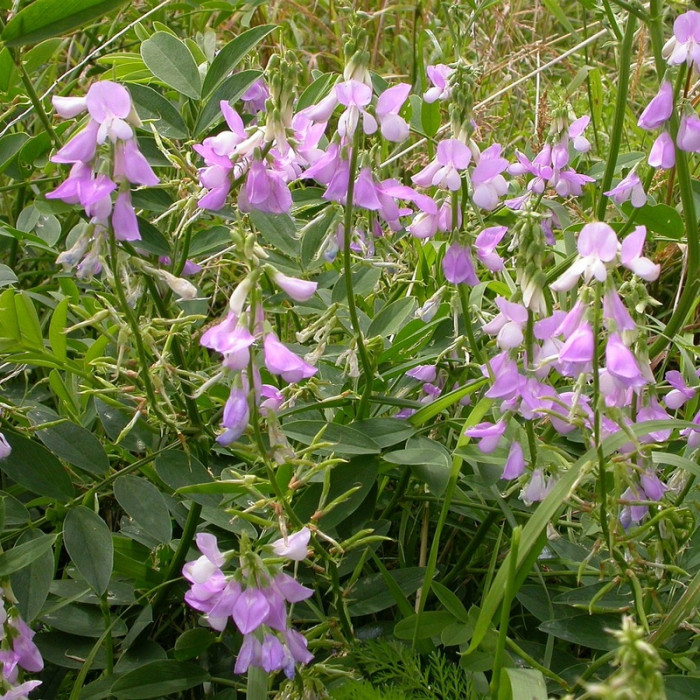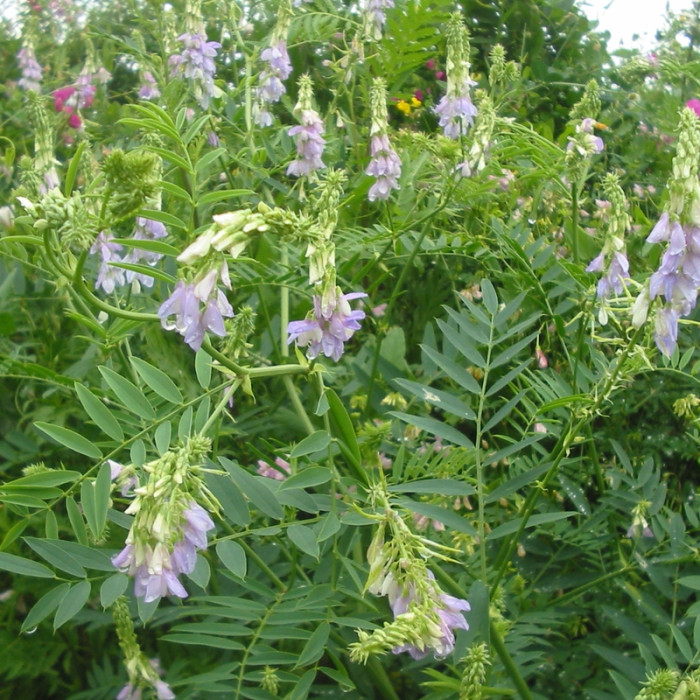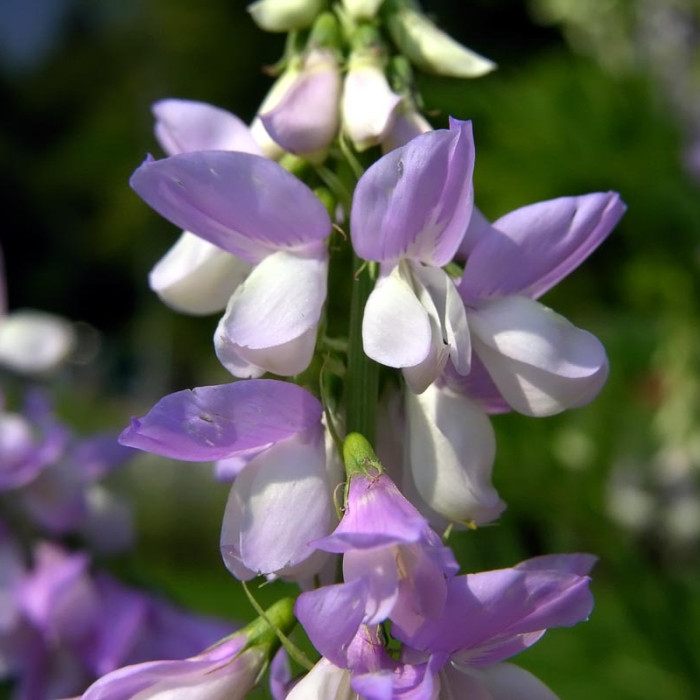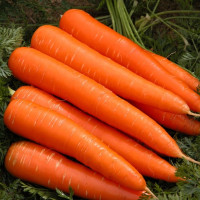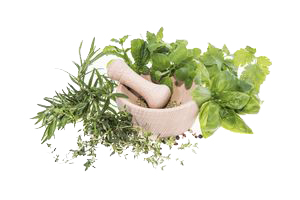Galega «Wizard» or Goat's Rue / Galega officinalis
Perennial herbaceous plant from the leguminous family (Leguminosae) up to 90 cm high, with a tap root. There are many stems, they are straight, branched, densely leafy with regular pinnate leaves up to 20 cm long, consisting of 11-21 oblong or linear-lanceolate leaflets.
The flowers are blue or light purple, irregular, of a typical butterfly structure, collected in dense racemes up to 25 cm long, emerging from the leaf axils. The fruits are multi-seeded beans, up to 4 cm long. It blooms in June - August, the beans ripen in August - September.
Goat's rue is used for diabetes mellitus, metabolic disorders, incl. carbohydrate metabolism.
Grows in meadows, along the edges of forests, in thickets of shrubs, along the banks of rivers and streams.
The aerial part of the plant (grass) and seeds are of medical importance. Alkaloids, including galegin and peganin, saponins, have been isolated from them. Grass is harvested in the flowering phase, the plants are air-dried in the shade, ripe fruits are harvested to obtain seeds, dried in the sun, threshed with sticks in a bag and the bean leaves are sieved into other garbage on sieves.
Goat's rue is used in folk medicine as a diuretic, diaphoretic and antihelminthic. It has been established that the alkaloid galegin contained in goat's rue leads to a decrease in blood sugar levels, therefore, the use of goat's rue for the treatment of diabetes is justified, but only in mild forms of the disease.

No questions about this product, be the first and ask your question.


